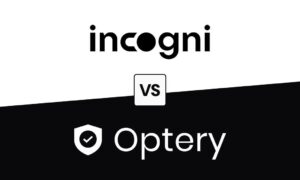In the dynamic landscape of digital marketing, staying ahead requires more than just basic knowledge. It’s about understanding the intricate terms and concepts that shape the industry. Whether you’re a seasoned marketer or just starting out, grasping these essential terms is crucial for success. Let’s dive into the terminology that every marketer should know to navigate the digital world effectively.
What Is Digital Marketing Glossary
Digital marketing has become an indispensable part of modern business strategies, offering a plethora of opportunities to connect with audiences, drive sales, and build brand presence in the digital landscape. However, navigating through the complex world of digital marketing requires a solid understanding of its terminology. In this comprehensive guide, we’ll delve into the digital marketing glossary, breaking down essential terms and concepts to help you navigate the digital realm effectively.
Read More: Digital Marketing Glossary
Some Essential Terms Every Marketer Should Know
1. SEO (Search Engine Optimization)
SEO is the cornerstone of digital marketing, focusing on improving a website’s visibility in search engine results. Understanding SEO involves knowing about keywords, meta tags, backlinks, and content optimization. It’s about ensuring your website ranks higher organically, driving more traffic and potential customers.
2. PPC (Pay-Per-Click)
PPC is a digital advertising model where advertisers pay a fee each time their ad is clicked. Platforms like Google Ads and Facebook Ads allow marketers to bid on keywords relevant to their target audience. Mastery of PPC involves keyword research, ad creation, bid management, and continuous optimization to maximize ROI.
3. CTR (Click-Through Rate)
CTR measures the ratio of users who click on a specific link to the number of total users who view a page, email, or advertisement. A high CTR indicates that your content is compelling and relevant to your audience. Marketers use CTR to gauge the effectiveness of their campaigns and make data-driven decisions.
4. CRM (Customer Relationship Management)
CRM refers to the practices, strategies, and technologies that companies use to manage and analyze customer interactions throughout the customer lifecycle. It involves storing customer data, tracking interactions, and nurturing leads to enhance customer satisfaction and loyalty. Platforms like Salesforce and HubSpot offer comprehensive CRM solutions.
5. ROI (Return on Investment)
ROI measures the profitability of an investment relative to its cost. In digital marketing, ROI is used to evaluate the success of campaigns and initiatives. By calculating the revenue generated compared to the amount spent on marketing efforts, marketers can determine which strategies are most effective and allocate resources accordingly.
6. SERP (Search Engine Results Page)
SERP refers to the page displayed by search engines in response to a user’s query. Understanding SERP features like featured snippets, knowledge graphs, and local packs is essential for SEO success. Marketers optimize their content to appear prominently on SERPs and drive organic traffic to their websites.
7. UX (User Experience)
UX encompasses all aspects of the user’s interaction with a product or service. In digital marketing, delivering a positive user experience is paramount for engaging and retaining customers. Marketers focus on factors like website design, navigation, page speed, and mobile responsiveness to enhance UX and drive conversions.
8. KPIs (Key Performance Indicators)
KPIs are measurable values that indicate the success of a campaign or strategy in achieving specific objectives. Common marketing KPIs include conversion rate, bounce rate, customer acquisition cost, and customer lifetime value. By tracking KPIs, marketers can assess performance, identify areas for improvement, and optimize their efforts accordingly.
9. CMS (Content Management System)
A CMS is a software application used to create, manage, and publish digital content. Popular CMS platforms like WordPress, Drupal, and Joomla provide tools for content creation, editing, and collaboration. Marketers leverage CMS to streamline content production, optimize SEO, and deliver engaging experiences to their audience.
10. A/B Testing
A/B testing, also known as split testing, involves comparing two versions of a webpage, email, or advertisement to determine which performs better. By testing elements like headlines, images, and calls-to-action, marketers can identify the most effective strategies for driving conversions. A/B testing enables data-driven decision-making and continuous optimization.
Conclusion
In the ever-evolving landscape of digital marketing, staying ahead requires a deep understanding of essential terms and concepts. From SEO and PPC to CRM and UX, mastering these terms empowers marketers to navigate the digital world effectively and drive measurable results. By continually learning and adapting to industry trends, marketers can stay ahead of the curve and achieve success in today’s competitive landscape.



































